Open Office: The Creative Office
Zoom, Teams, Skype. Whatever you’re using, we’re sure you’ve encountered the odd frozen colleague, a dropped internet connection, or a difficult-to-hear discussion over the past few months. We’re all adapting to the ‘new normal’ and, whilst there are many perks to working from home (a five second commute topping our list), there are a number of pitfalls – and perhaps one of the most detrimental is the impact all these virtual meetings are having upon our creativity.
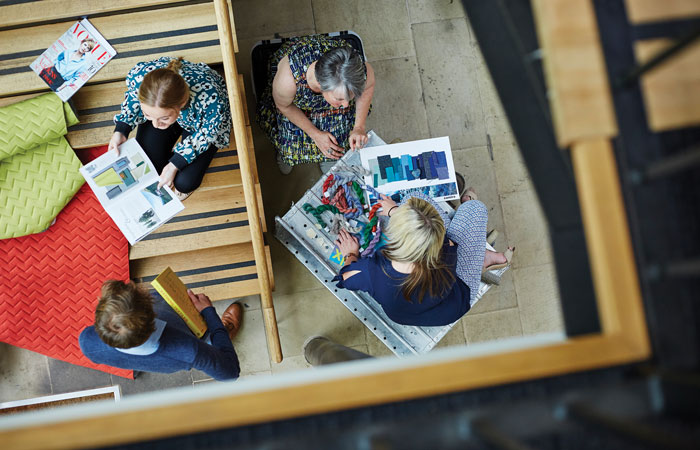
An integral, yet difficult to quantify, element to business success, creativity is something that cannot be forced – it is, by its very nature, sparked – induced by something outside oneself. And that can be difficult to achieve when sitting alone, working, as so many of us are, at a kitchen table or home office desk. Of course, there are benefits to this semi-solitude; concentration and isolation go hand in hand after all, however, as Bacevice et al. comment in ‘7 Factors of Great Office Design’ – an article published in Harvard Business Review discussing the attributes integral to creating the ideal working environment – “Collaboration and quiet are two ends of a continuum with a range of in-between work modes — each with an optimal setting.” At the moment, we have the quiet – and we’re missing out on the rest.
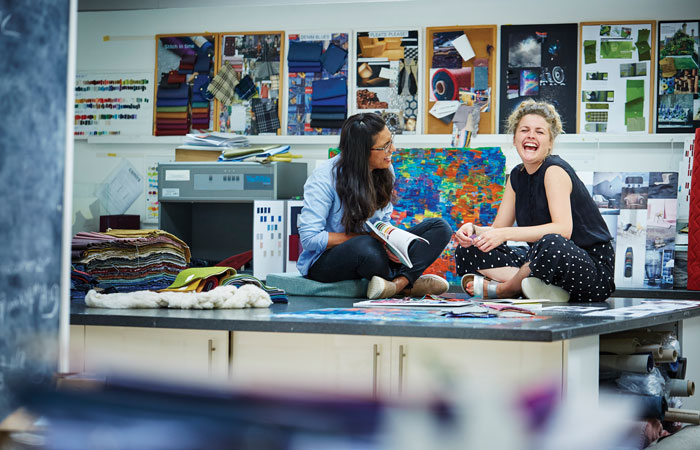
As Lynn Kingdon, Head of Creative Design at Camira, comments, “The heart of Camira’s office is the design table; located in the centre of the space, surrounded by a myriad of fabric swatches, yarn snippets and picture boards filled with inspiration, it is a place bursting with tactility, texture and visual stimulus. Built for collaboration and creation, a virtual replication is a tricky task to achieve.” And the importance of having this space is difficult to overstate, with a number of research reports revealing that employees thrive when they are provided with workplaces that facilitate both solitude and collaboration.
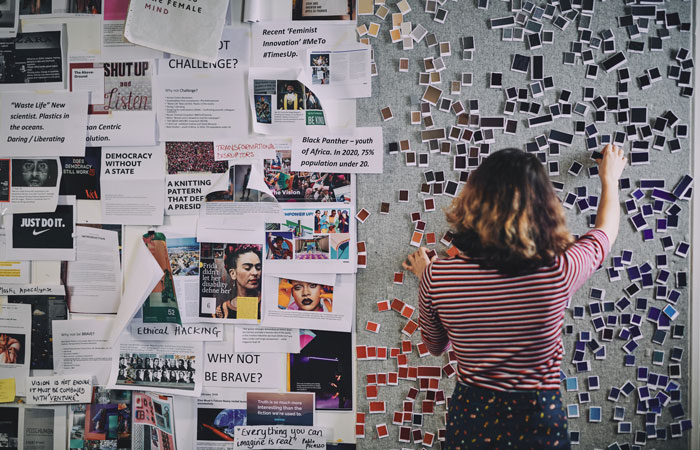
Whilst in the past a typical office may have meant a space filled with rows of desks, blank walls and a drab canteen, many organisations have acted upon these studies, creating interiors curated for people – breakout rooms, zonal spacing, acoustic privacy are much more than buzzwords, they are integral to employee productivity, happiness and wellbeing. As one of the UK’s leading office textile manufacturers, we’ve worked with interior designers and architects across the globe in creating workplaces that do exactly this – spaces that stimulate, excite and inspire employees.
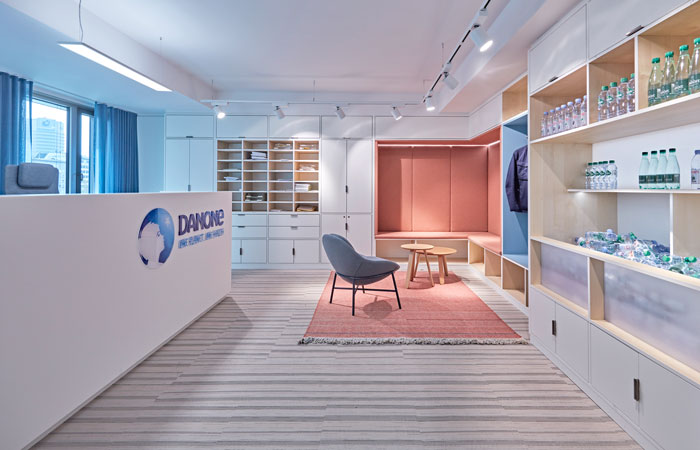
Take, for example, Danone’s Frankfurt headquarters by de Winder architects – a workplace that beautifully blends the company’s different brands into one cohesive scheme – Adobe’s London space by Tsunami Axis – with a sleek seating area for every purpose – and Deutsche Bahn’s new Berlin head office, which perfectly reflects the company’s eco-friendly ethos with its zero waste aesthetic. As these projects show, offices are much more than buildings, they are reflections of our brand, supporters of our people, and the place where we can get together without depending on an internet connection or an app’s reliability.
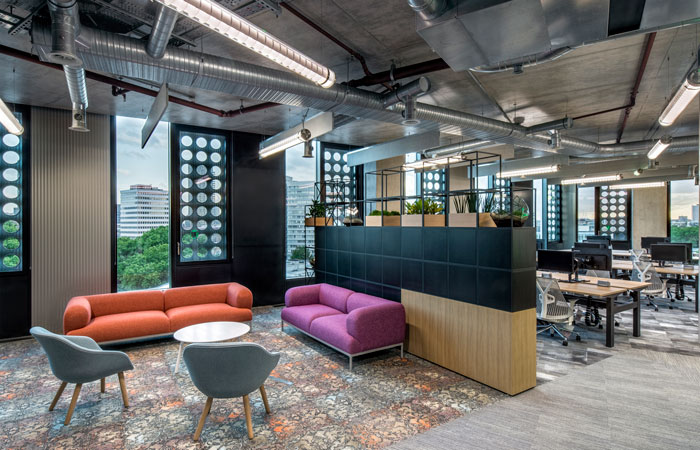
Simply put, there’s no substitute for speaking with your colleagues around a table, as Lynn expands, “Communicating and connecting with other Creatives in the same physical space is an essential part of design. It’s difficult to recreate the spontaneity of a free-flowing conversation – with people pitching in, interrupting and bouncing off one another – over a Teams call, which can be quite static – with just one person speaking at a time, and waiting for their turn to suggest an idea.” Whilst we may all be becoming very polite, this new form of collaborative working prevents the natural bursts of creativity that thrive in the informal – in the places outside the scheduled meetings; in the corridors, the canteens, the coffee breaks.
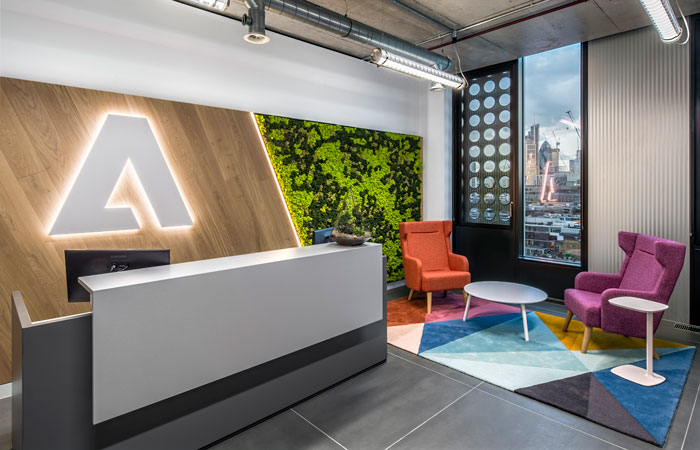
Indeed, one of the most famous examples of the power of the creative, collaborative workplace comes from all the way back in 1986 when Steve Jobs – then CEO of Pixar – designed the organisation’s new building; placing the space’s only toilets, café and post boxes in its centre. As Jobs explained in 2001, the reasoning behind his design decision was simple, “We wanted to find a way to force people to come together, to create a lot of arbitrary collisions of people.” And, as the Independent’s Archie Bland comments, “It worked. Something remarkable started to happen. […] Pixar’s employees started to bump into each other. They shot the breeze. Sometimes, the chatter would yield something useful, and one of the participants would head back to her desk with a new idea.”
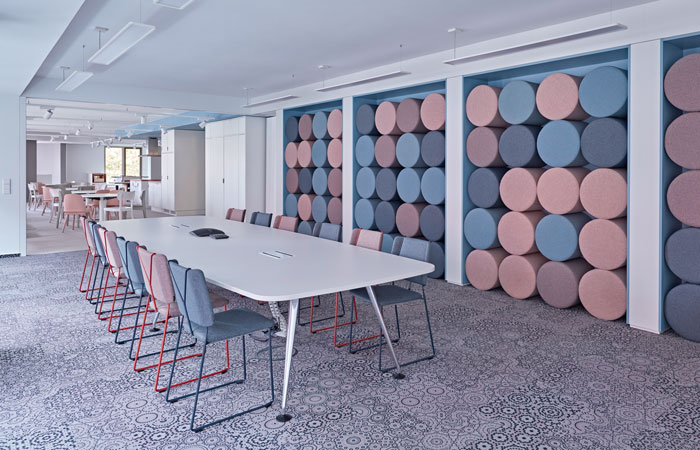
There can possibly be no better testament to the power of the creative workplace than the financial return achieved by Pixar; in 2006, the company was sold to Disney for $7.4bn. Steve Jobs had paid just $10m only two decades before.
It is something that we have found to be equally integral to our business, as Lynn explains, “Creativity lays at the centre of our success. Interior design is a continuously moving entity – trends emerge, evolve and pass – and to stay ahead of our competition, we have to predict the colours, textures and tones that will be desired in the coming months. We have to dream up new and unique ways of doing things, embrace change and react to business challenges – a key part of achieving that is bringing different areas of the company together, and there is no better place to do that than the office. Face to face.”
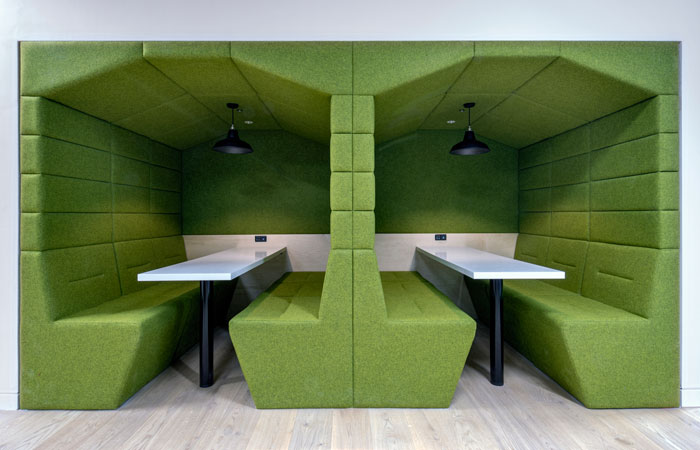
So, whilst a full return to our workplaces may not be possible at the moment, the office itself remains as necessary as ever before – it is the home of both our community, and our creativity.
Contact Camira through BCFA Product Finder.
The BCFA Product Finder is a unique search engine created especially for interior designers to source contract furnishing companies. Utilising this platform will support your findings for upcoming projects, with over 200 members profiles showcasing the latest product launches, new materials available, industry news and design trends.




